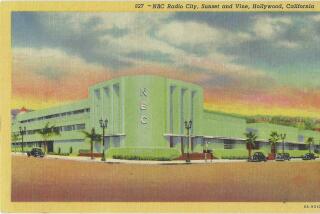The Wave’s on Crest of Popularity
- Share via
As any listener to its music can tell you, the Wave, otherwise known as radio station KTWV-FM (94.7), does not make waves. It’s mellow, New Age, feel-good butter music. Music that reminds you not of waves crashing against a shore but of the tinkly ripple of a waterfall.
Smooth jazz, fans dub it. New adult contemporary, the radio industry calls it. Elevator music, some critics snipe.
Yet as a format, this is the one that’s now making waves here--surging over the last two years in ratings, both in the overall category of total listeners and, more significant, in the key demographic of 25- to 54-year-olds, whom many advertisers target.
More than any other radio format, smooth jazz is also the one that’s burgeoning in advertising revenue, up 75.7% nationally in the last three years and, at KTWV in Hollywood, up 75% this year alone.
“I think people connect with [smooth jazz],” says Don Burns, KTWV’s chocolate-voiced afternoon host. His 2-7 p.m. weekday program is the most popular afternoon English-language show in the market among 25- to 54-year-olds, with a 4.9% share of audience.
The music by artists like Kenny G, Sade and Anita Baker is “friendly,” adds Burns, 49, a Los Angeles native who began his radio career in the armed forces at Radio Saigon nearly 30 years ago. “Like [Cezanne] would be to the eye, this is to the ear. It’s not objective. It’s just there. You don’t think about it. It’s comfortable.”
In the most recent Arbitron ratings, KTWV for the second quarter in a row accounted for 4.3% of the 25- to 54-year-old audience that tunes in for at least five minutes in any continuous 15-minute period--fourth best in the 85-station Los Angeles market behind Spanish-music station KLVE-FM (107.5) with 8.2%, oldies station KRTH-FM (101.5) with 4.5% and urban station KKBT-FM (92.3) with 4.4%.
In the previous quarter, KTWV had ranked second in the demographic behind KLVE. The slight tumble does not bother station executives.
“We’re splitting hairs here,” says Christine Brodie, the Wave’s program director. Just two years ago, KTWV had a 2.9% share in this demographic and was tied for 13th place.
Moreover, KTWV’s cumulative audience--the number of people who tune in for at least five minutes during an average week of Arbitron’s survey--reached its highest ever at an estimated 1 million in the areas that its 34,600-watt signal reaches: Los Angeles and Orange counties and parts of Ventura, San Bernardino and Riverside counties.
Why have ratings jumped after KTWV has been on the air nearly a decade?
“The riots, the cataclysms that we’ve been through in the last five years, have really brought this format to the forefront,” deejay Burns says. “It’s a healthy sound--mentally, emotionally and physically. People are jogging to it. . . . I think we’re hard-wired to mellow out.”
KTWV grew out of the old KMET-FM, a youth-oriented rock station. In the fall of 1986, KMET had an overall 1.8% audience share and ranked about 20th.
“It had simply run its course,” says Brodie, who has been with the station since 1984, starting out as an assistant program director. “A think tank was developed [to] revitalize KMET. It was set up as an open forum, a combination of outside and inside consultants. Anything or everything was a possibility. . . . The genesis of the Wave came out of that process.”
*
The new format began in 1987. KMET’s rock fans hated it, but some 70 stations across the nation have since followed suit.
Brodie points out that KTWV’s managers quickly found that there could be “potentially more revenue in an adult-type format.” And they realized that the format was virtually alone in the radio market.
The smooth jazz genre had emerged in the late 1960s and early ‘70s with such artists as Herb Alpert, George Benson and Spyro Gyra, but it had no concentrated radio outlet. Today, Wave music merges those older performers with newer ones like Vanessa Williams, Rick Braun and Toni Braxton.
But station executives indicate that KTWV’s success is more than its format or the art of its music; there’s a certain science to it.
In 1994, the station refined its system of audience testing. Several times a year, across its geographic area, KTWV takes groups of about 250 Wave listeners and tests various pieces of music on them.
“It’s beyond focus groups,” Brodie says. “To put it as bluntly as possible, we pick the hits . . . really refine what the absolute hits are. Just as with any other kind of radio format, you find the absolute most popular pieces of music and play them.”
*
The mellow mood extends beyond the music. Although there are regular news and traffic reports in the early morning--”people will want to know that the world is OK when they get up,” Brodie says--after 9 a.m. KTWV forgoes news and provides traffic updates only on the half-hour from 4:30-6:30 p.m. Paul Crosswhite’s morning program closed recently with a soothing listener homily: “Anger is the soup that eats the cook.”
When the station broke into programming late July 26 to report the bomb blast at Centennial Olympic Park in Atlanta, it was the first time it had done so since the verdict in the O.J. Simpson trial last Oct. 3.
KTWV executives discussed interrupting when Trans World Airlines Flight 800 crashed into the Atlantic on July 17 but decided not to. “Minimal effect to the local community,” Brodie says. “If the 747 crashed off the coast of Los Angeles, it would have been a different story.”
“It’s the predictability thing,” says Tim Pohlman, KTWV vice president and general manager. “[Listeners] are hitting that button for the music.”
Brodie characterizes smooth jazz as “very melodic” and traditional jazz as “improvisational. Even the instrumental music you can hum to.”
To assistant program director and music director Ralph Stewart, smooth jazz is “melodic, sophisticated, adventurous.”
But never call it elevator music. “How can there be the passion that a lot of people have” for the music, Brodie asks, “how can there be the volume of record sales, the popular acceptance of it, if it’s merely”--she scrunches her face--”background?”
More to Read
The biggest entertainment stories
Get our big stories about Hollywood, film, television, music, arts, culture and more right in your inbox as soon as they publish.
You may occasionally receive promotional content from the Los Angeles Times.










